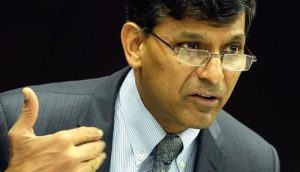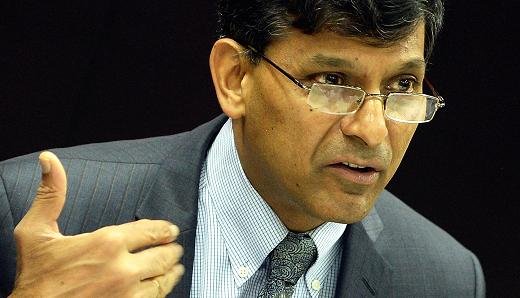By Biswajit Choudhury
Mumbai–The year 2016 has been the most momentous since India’s Independence for the Reserve Bank on account of a trinity of events — Raghuram Rajan’s exit from the governorship, the decision on interest rates for the first time by a Monetary Policy Committee and the demonetisation of high-value currency last month.
This last also put a question mark on whether the RBI knows its math — as several analysts found, the many figures it put out about disbursal of new currency notes simply did not add up.
Rajan’s term was due to end in September and the preceeding months passed amid speculation about whether his term would be extended, punctuated by attacks on him and his policies in the media voiced by prominent people close to the ruling BJP.

Rajan himself ended the suspense by announcing he would quit at the end of his three-year term because he had decided to return to academics in the US. It also ended up as being the first time that a government had not extended the tenure of a RBI Governor.
With India becoming the fastest-growing large economy in a global context of economic slowdown, the pressure on Rajan to cut the RBI’s short-term lending rate to spur growth had become louder and more intense every time the bi-monthly monetary policy review came around.
Considering Rajan’s credentials and record, he was the person most suited to the job. Beginning with his unexpected rate cut in January 2015, Rajan reduced the RBI repurchase rate by 150 basis points by the time he left office. It is another matter that banks have only transmitted a fraction of what Rajan eased in rates to their customers because of the huge stress on their balance sheets from bad loans.
When Rajan took charge at RBI in 2013, at a time the US Federal Reserve had declared its intent to wind down its stimulus programme, the rupee plunged in value against the dollar on fears of a spiralling current account deficit.
In a series of measures, Rajan managed to stabilise the currency and bring back investors. Giving Rajan its Central Banker of the Year award for 2015, British magazine Central Banking said: “His decisive policy actions based on robust analysis and deep understanding of the underlying causes have contributed significantly to changing perceptions about the strength of the Indian economy.”
Rajan had predicted the 2008 market crash caused by the housing market crisis in the US that put its economy into deep recession and set off a global slowdown from which the world is yet to recover. In 2005, Rajan had argued that increasingly complex markets with myriad instruments of credit and mortgage-backed securities in ever-greater quantities had made the global financial system a risky place.
Over a decade later, Rajan is stronger in his belief that global markets now are at risk of another crash due to the developed economies adopting competitively loose monetary policies. Pointing to the very low interest rate policies of the US Federal Reserve, the Bank of Japan and the Bank of England in a bid to stimulate their economies, he has been warning that emerging markets are especially vulnerable to big shifts in capital flows triggered by the unprecedented monetary accommodation in rich countries.
Though the expectation among those critical of Rajan for not easing enough on monetary policy were high when Urjit Patel took charge in September, it needs to be kept in mind that his moorings are as monetarist as Rajan’s and he attaches the same importance to controlling inflation as his predecessor.
His views on the monetary policy were expressed at the time Rajan held rates in the February 2015 review after making an unexpected rate cut the previous month — the first in nearly two years. Patel elaborated on the “important backdrop” to Rajan’s move.
“We are in the midst of the age of competitive depreciation and of a beggar-my-neighbour philosophy. It brings to mind an old African saying that when elephants fight, the grass suffers,” Patel said at the press conference to announce the policy review, on the trend of accommodative monetary policies being adopted by developed economies.
“While the ECB (European Central Bank) and the Bank of Japan are printing money and devaluing their currencies on one hand, the US economy is reviving on the other. Anyone in the middle is getting crushed,” he added.
Patel became the first governor to preside over a committee approved monetary policy review of RBI rates in October.
The government also set an annual inflation target of four per cent, plus or minus two percentage points, for the next five years. The RBI Act was amended for this through the Finance Act, 2016.
The setting of the inflation target comes under the monetary policy framework agreement between the government and RBI signed last year, by which the government, in consultation with the central bank, determines the inflation target in terms of the Consumer Price Index (CPI), or retail, inflation once in every five years.
Now it is the Monetary Policy Committee, which sets the interest rate — that was earlier being done by the RBI. Out of the six members of the MPC, three are from RBI, including the Governor, who is the ex-officio chairperson. The other three members are appointed by the Centre.
Patel will also go down in history as having presided over the November demonetisation of high-value currency designed to combat black money, counterfeit currency and terror financing. The move provoked a major cash crunch, and came under fire for the slow pace of re-monetisation, with the RBI committing a number of flip-flops in announcing measures to deal with demonetisation.
As things stand today, the true proof of the pudding will come only in the new year. The question is: When? (IANS)





